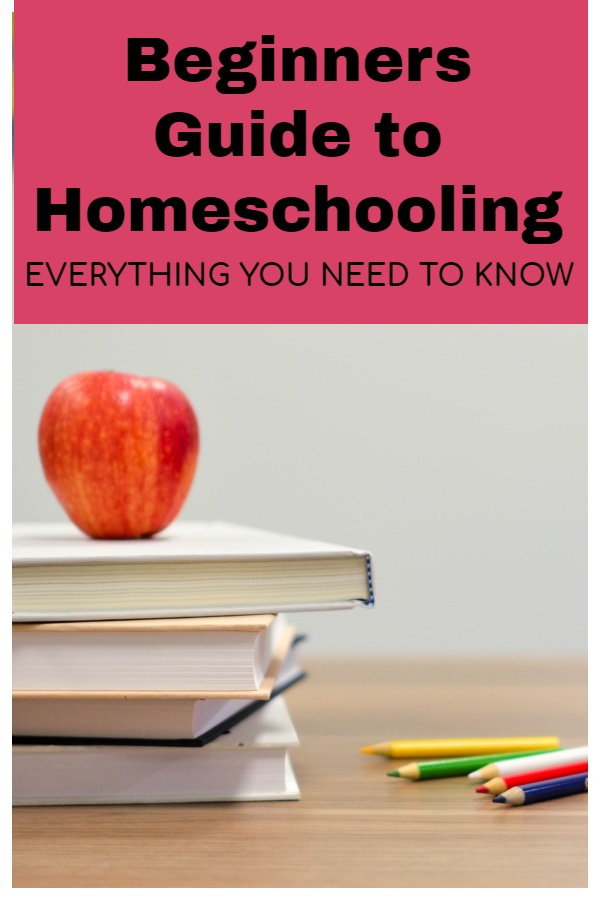
Disclosure: Some of the links below are affiliate links, meaning, at no additional cost to you, if you click through and make a purchase, I will earn a commission.
Excited and lost. That was me when our family made the decision to homeschool. I was excited for the new journey ahead. However, completely lost on how to start.
My mind began to swirl with all the possibilities and all the questions. Homeschooling is such a broad topic, which is great, but for the beginner this is overwhelming and can be anxiety producing. I know because it happened to me.
“This is going to be so fun, but I am feeling overwhelmed on where to start!”
“There are so many curriculum choices! How am I supposed to decide?”
“Method of homeschool? What does that even mean?”
I was once a beginner who needed a simple guide to homeschooling. That is why I created this simple, yet detailed homeschooling guide for the beginner!
Table of Contents
First Steps
Homeschool Laws and Requirements
Every state has different homeschool laws. A helpful website is the Home School Legal Defense Association. You can search and read about the laws specific to your state. Another website to visit is your state’s Department of Education website. Here are some of the laws and requirements you might see.
- Compulsory School Attendance Age: This is a fancy way of saying once your child reaches the age your state lists, that is when you need to report them as being homeschooled. Until then, you can still homeschool! Just be mindful of that age you need start reporting. The hslda website has links to the forms, but you can also check your public school district’s website for forms and where to submit them.
- Complete a certain amount of instructional days: The most common is 180 days of instruction, which typically is a 36 week school year.
- Certain subjects you are required to teach: For example, math, reading, writing, history, etc.
- Keep records of your homeschool: This is your schedule, number of days, curriculum and work samples from your child along with test scores for required subjects. You may also need to submit a yearly portfolio.
- Required assessment and evaluation: Some states require you to administer a standardized achievement test. This sounds scarier than it is. If you want more information on testing other than hslda website, I would recommend googling ‘your state + homeschool alliance’ or ‘your state + christian home educators.’
- Extracurriculars: You might have questions about your child participating in sports, band or other extracurriculars offered through the public school district. The easiest way I found to get information is call the public school. I have called our school a few times and they are always helpful.
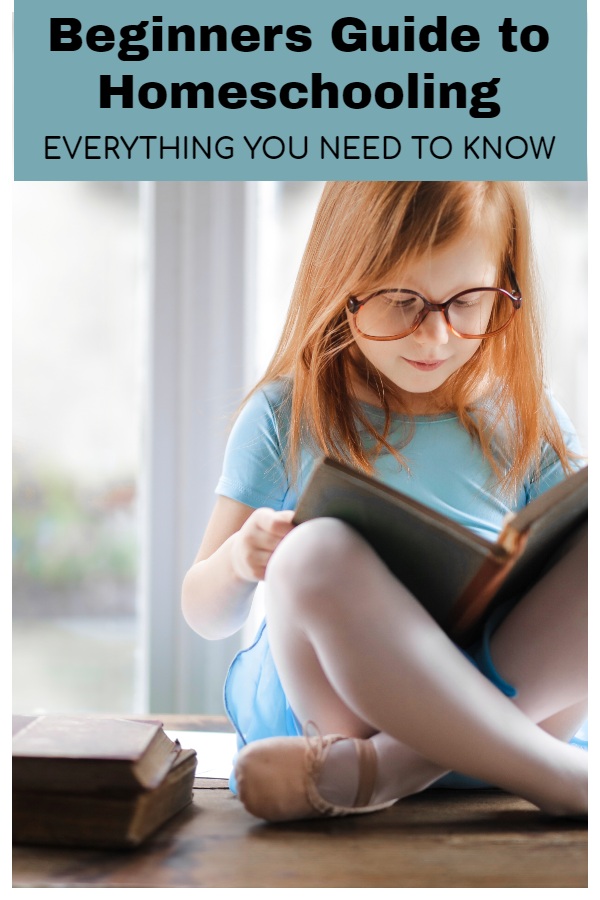
Start to Recognize Learning Styles
When you first begin homeschooling you need to fight the feeling of needing to have it all figured out right away. Ok, so the laws and requirements you need to follow from day 1, but the other stuff takes time and trust me when I say, that’s OK! It is important though to start paying attention to how your child learns best. It’s actually really fun and you might find that all your kids are the same or completely different. Here are the most common learning styles.
- Visual Learners: These children learn best by seeing. They prefer to read the information or look at pictures. They like to draw and watch a demonstration. Flashcards, picture books, showing how to do something, and having written words of information hanging up for them to see are ways to teach a visual learner.
- Auditory Learners: These children learn best by hearing. They prefer to listen to information and then verbalize it back. They like to sing, listen to music, reading out loud or being read to. Singing songs, audio books, verbalizing instruction and having them narrate back to you are ways to teach an auditory learner.
- Kinesthetic Learners: These children learn best by moving. They prefer to be moving while taking in information. They like to build and like being active. Doing projects, hands on learning, taking breaks and role playing are ways to teach a kinesthetic learner.
- Linguistic Learners: These children learn best by reading and writing. They prefer to write and read information. They like words, learning new words and language based games. Doing presentations, writing assignments, reading out loud and note taking are ways to teach a linguistic learner.
Here are some other learning styles to keep in mind:
- Logical Learners: These children learn best by problem solving.
- Social Learners: These children learn best in a group.
- Solitary Learners: These children learn best independently.
Also take into consideration the type of environment your child learns best in.
- Quiet room with no distractions.
- Music playing in the background.
- In the living room, hanging upside down on the couch or stretched out on the floor.
- At their own desk.
- Room temperature. Being too hot or too cold can interfere with learning.
- Time of day. Some kids are more awake and energized in the morning, others in the afternoon.
- Meal and snack times. It can be hard to concentrate when you are hungry.
Discover Your Homeschool Method
We all have a different way of doing things- our own method. Therefore, the great thing about homeschooling is that you get to decide what works best for you! Having a framework for your homeschool definitely lends to a smoother decision making process in choosing curriculum and how you want to structure your day. Your homeschool method will likely change overtime and that is ok, that just means you are learning more about yourself as a homeschooler. Remember that no homeschool is the same. Just because you do something different than your friend doesn’t mean hers (or yours) is better. So, what are the different styles of homeschool?
Charlotte Mason
Educating the student as a whole and viewing education as atmosphere, discipline and life. Atmosphere being the environment you create for your homeschool, discipline being developing good habits, and life being learned through books. Charlotte Mason uses living books, nature studies, art appreciation, narrations, copy work, handicrafts and formation of habits. You can learn more here.
Classical
Educating the student with a 3 part system called a trivium. The first part is called Grammar Stage/Knowledge (elementary school age) where students focus on memorization. The second part is called Logic Stage/Understanding (middle school age) where students are taking the memorized information and asking why. The third part is called Rhetoric Stage/Wisdom (high school age) where students are applying logic. For more information click on the link below. You can learn more here.
Unit Studies
This method centers all subjects around one main topic. Therefore, you base all teaching and learning around that one topic for a set amount of time. For example, your child is interested in apples. For science you could learn about the life cycle, language arts you could read apple themed books, math you could do a taste test and graph the results, etc. You would finish the apple unit study and then move onto the next topic of interest.
Traditional
This method mimics traditional public school. Such as having a schedule similar to public school, use workbooks, your student has a desk, and you follow the traditional school calendar. In other words, it’s school at home. Most beginner homeschoolers start out here and then branch out into one of the other methods.
Unschooling
Education through living and experiencing, instead of using a curriculum. Parents come alongside their children and provide resources to further develop their child’s interests. Unschooling is confidence that your child will learn all subjects through day to day living and by natural learning.
Eclectic
This method is a popular one because you pick and choose the things you like from more than one method and have them work together in your homeschool.
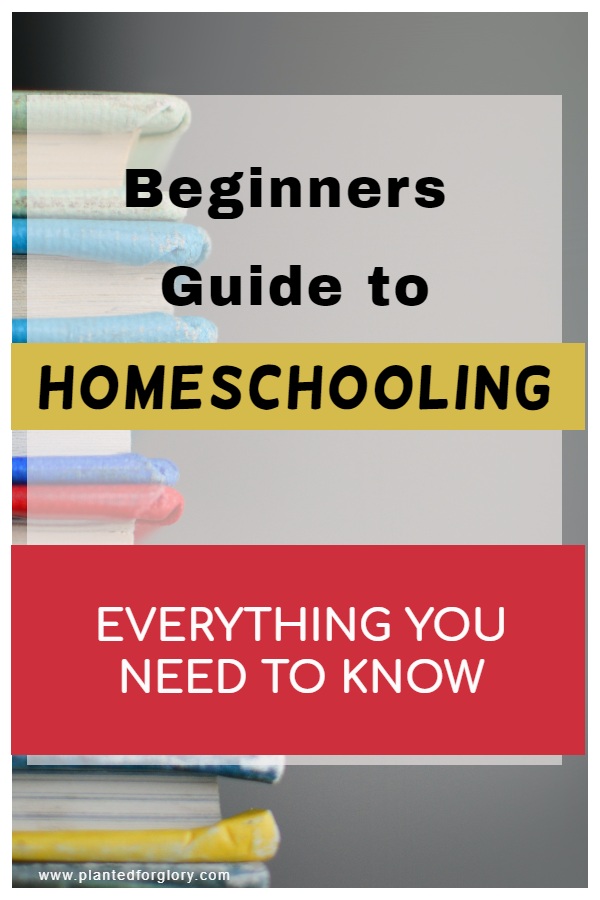
Curriculum
This can be overwhelming for sure- but once you know how your child learns and know your method, picking a curriculum is actually fun. It’s important to know these things before purchasing a curriculum- so you know what to look for!
Worldview is also something you will want to keep in mind as you shop for curriculum. Do you want a curriculum with a Biblical worldview or a secular worldview?
Do you have multiple children you are teaching at once? Consider dedicating one subject to a DVD curriculum to free up some of your time to teach your other children. We do this with our writing curriculum. You will thank yourself, I certainly did!
Before looking at specific curriculum, there are three main ways curriculum comes. Let’s look at the different ways.
Types of Curriculum
- Boxed curriculum from one company: This also known as an all in one curriculum or school in a box. Meaning, you will get a box and it will include materials for all subjects your child needs for the grade level they are in.
- Piece your curriculum together using different companies: Purchase your math curriculum from one company, purchase your writing curriculum from a different company and your history curriculum from yet another company.
- Make your own curriculum: In other words, you do not buy curriculum from a company, but instead you use the library, online resources, like Teachers Pay Teachers, or your own creative brain to piece together your own curriculum.
Now let’s look at some specific curriculum. Listed below are curriculum companies categorized by the method they are most inspired by. This is not a comprehensive list and I have not used all of these, these are just some of the more popular ones. Unless indicated, the company offers multiple subjects.
Popular Curriculum By Method
Links go directly to the curriculum companies, but better prices may be available on Amazon, Christian Books or Rainbow Resource.
Charlotte Mason
- 5 in a Row
- All About Learning Press
- Beautiful Feet (history and geography)
- Berean Builders (science)
- Explode the Code (phonics)
- GeoMatters (geography)
- Master Books
- Queen Homeschool
- Simply Charlotte Mason
- Sonlight
- The Good and the Beautiful
- Winter Promise
- WriteShop (writing)
Classical
- Bright Ideas Press
- Classical Academic Press
- Classical Conversations
- Memoria Press
- Veritas Press
- Well Trained Mind
Unit Studies
- My Fathers World (mix of classical & charlotte mason)
- Tapestry of Grace (classical)
- Weaver (traditional)
Traditional
- Abeka
- Apologia (science)
- BJU Press
- Essentials in Writing (writing and literature)
- Evan-Moor
- Horizons
- Institute for Excellence in Writing (language arts)
- Lifepac
- Rod and Staff
- Shell Education
- Wordly Wise (vocabulary)
A note on math curriculums: Most math curriculums follow either the spiral method (as you go though the program you circle back to each concept and go deeper each time through), the mastery method (mastering one concept and then moving on to the next concept) or a mix of both. Here are some of the popular options.
- Abeka (spiral)
- Horizons (spiral)
- Teaching Textbooks (spiral)
- Math U See (mastery)
- Saxon (mastery)
- Singapore (mastery)
- Master Books (mix)
- Life of Fred (mix)
- RightStart Math (mix)
- The Good and the Beautiful (mix)
Supplies
I try to buy homeschool supplies once for the entire year. I store the extra supplies away and pull it out as needed instead of having to order more. Makes budgeting and planning much easier. Also check your curriculum, they might have a required supplies list.
- Pencils: Ticonderoga– our favorite brand.
- Electric pencil sharpener: Here is one with 24,000 5 star reviews!
- Dry erase markers: Modern Twist is my choice because they don’t smell.
- Dry erase board: We have this one on wheels, and other smaller ones.
- Scanner printer combo, ink and paper: This might be an investment, but we use ours often.
- Globe and wall maps: This is the globe we have.
- Three hole puncher
- Stapler and extra staples
- Magnets: I like these because they have a clip.
- Paint: Our favorite is Ikea paint.
- Paint trays: We have these from Amazon. Everyone gets their own paint and the colors won’t mix. It’s a win!
- Paint brushes: We use Ikea paint brushes.
- Markers: On a whim I tried Jolly Booster from Amazon and really like them. They go in and out of stock often (currently out of stock), so I usually stock up when I can. I also really like these Faber-Castell markers.
- Colored pencils: We use Faber-Castell.
- Glue sticks: Our favorite is Onyx and Green. When I had toddlers put everything in their mouths and wanted a non-toxic glue. I liked it so much I keep buying it.
- Notebooks: I can’t resist the Greenroom brand from Target. They are so fun and pretty!
- Binders: I use Greenroom for binders too.
- Paint and marker sketch book
- Rolls of white paper
- Construction paper and card stock
- Scissors
Special art project supplies
I also make a separate list for any extra supplies we will need for art projects. Things like googly eyes, tissue paper or paper plates. I’m not very crafty and planning art projects stresses me out a bit, so I take one evening and plan an entire year worth of art projects, one project per week. Yup, I would be lost without Pinterest! I print the name of the project, directions and supplies needed, any templates or visual instructions for the project, along with a small picture of the final project. Then put that all in a folder and call it a day. I keep all the extra supplies for those art projects in a separate bin.
How Much Does Homeschool Cost?
Adding It Up
My cost is going to be different than your cost. Just like we talked about in the homeschool method part of this post, homeschools are not going to look the same, the same goes for cost. I can’t say for sure what your homeschool will cost because the cost varies and depends on a few things.
- The number of children you have.
- The homeschool method you resonate best with.
- The curriculum you decide on.
- Amount of supplies you need.
- The number and type of extracurricular activities your kids are in.
- Co-op’s (we will talk more about those below)
- Field Trips you plan.
- Fun extras like having a first day/last day party, holiday parties, etc.
On average, plan to spend $500-$700/student every year. Again, this number widely varies. You can homeschool on any budget! If $500/student every year is too much, you might use more free resources, cheaper curriculum options or make your own curriculum from free or low cost online resources. It’s important to set a homeschool budget so you have a plan and won’t feel stressed when it comes to buying things for homeschool.
How to Budget For Homeschool
Be warned
In the beginning everything is going to look good, you will want it all. However, to combat this, focus in on the subjects you will be teaching and the method of your choice and seek out those only. Later on in your homeschool journey you can explore other options, but for now, stick to a focused list. For example, if nature study, foreign language and music lessons all sounds awesome to you, but you are overwhelmed with just figuring out language arts and math, then hold off on them for another day! You do not have to buy all the curriculum today. Keep a list of curriculum you would like to use in the future. Add it in as it fits into your schedule or budget.
Stay ahead
Try your best to have an idea of things you need to purchase for the following school year. This will give you time to save up money. When you are planning, it doesn’t have to be exact. Estimating is fine and way less stressful. So let’s say you want to do a field trip to go along with your science, you can start looking at places online to get a general idea of costs. For curriculum, you can estimate costs by knowing what you need to purchase for the following year. Usually this includes buying the next level of curriculum, or adding in a new subject. Look online at the curriculum you are considering and get an idea of the cost. Make a category list of all the areas you likely will spend money. Curriculum- Supplies- Extracurricular- Co-Op- Field Trips. Go from there adding in estimated costs.
Know why
Before you buy, allow time to think about whether or not it’s actually a good fit. Why you are buying something? Because the homeschool mom down the street uses it is not a good answer. After all, you want to be able to realistically use the curriculum, not just have it collecting dust and buyers remorse.
Shop smart
Watch curriculum websites for sales. Most companies run sales, for instance, Black Friday sales. Be sure to get on their email list so you won’t miss any sales! Also, check for local homeschool book sales, that is a frugal way to get great curriculum.
Use free
Use free resources! Library books can be a valuable tool in your homeschool. So can Pinterest. There are so many wonderful free downloads on Pinterest that are used by many homeschool families.
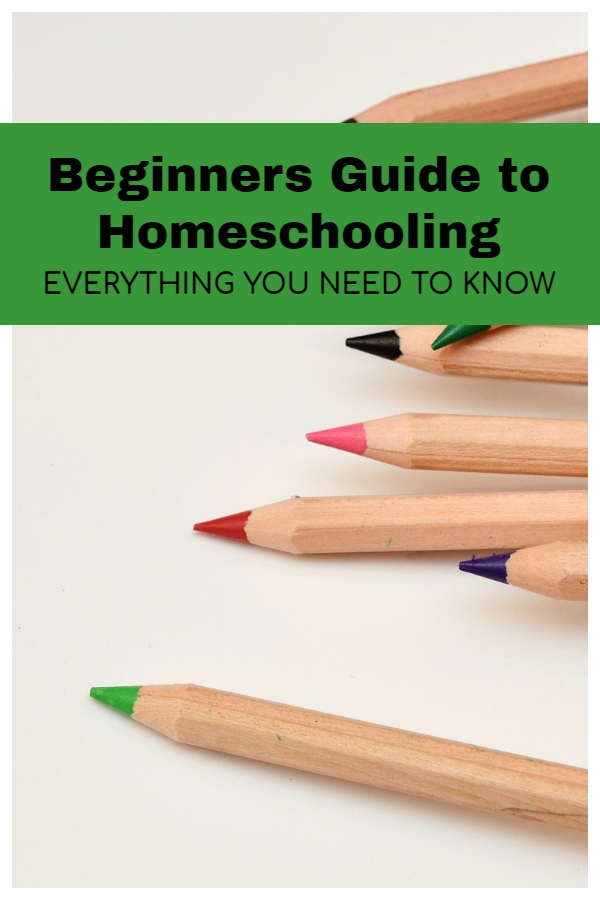
Making a Homeschool Schedule
Once you know what homeschooling method and curriculum you want to use, it’s time to put them into action and decide on a schedule. This is a schedule for your homeschool as a whole, from here you can create a daily schedule.
Ways to Structure Your Homeschool as a Whole
- Firstly, know how many days you need to school according to your state.
- Next, decide how many days a week you want to school. Some people take Monday or Friday off or do light homeschooling and use the rest of the day as a catch up day to clean the house, go grocery shopping, etc. It can also be a day for fun outings such as play dates, field trips, library visits or nature walks.
- Then, decide if you want to school year round or follow a traditional 36 week calendar.
- With year round schooling it is popular to have a routine of schooling for 6 weeks and then taking a week off and do this year round with maybe a month or so off in the summer.
- With a traditional calendar it is popular to have semesters and quarters and a 3 month summer break.
- Either way, the last thing to do is figure out when you want your last day of the school year to be, consider the breaks you want to take, holidays, any vacations and then count backwards from your end date the number of days you need to complete and you will find your start date.
How to Make a Daily Homeschool Schedule
The most important thing is to be flexible and know your schedule will likely change until you find what works perfect for your family. There is no right or wrong way to make a homeschool schedule. Some people closely follow schedules and others do best with routines and not a schedule. When creating a schedule though, there are generally three popular templates.
- Block Scheduling: This is good for high productivity. For example, you block 9-11 AM for core subjects and 2-3 PM for electives. You don’t do anything else in those time periods except homeschool. You could have a chores block, a work block, a meal prep block, etc. Another way to use this template is have longer blocks. For example, if it’s too much doing history and science in the same week you could block history for the first semester and science for the second semester.
- Loop Scheduling: This is good for getting in multiple subjects. For example, you know math and language arts will be daily, but you have a hard time getting to geography, history and science. Instead of stressing about never getting through all the subjects in a day, you put geography, history and science on a loop. So, on Monday you got to geography and that was all, Tuesday you would start with history. Wednesday you didn’t get to any extra subjects, so Thursday start where you left off.
- Check List Scheduling: This is good for teaching independence and time management. Either on Sunday night, or even just the night before each school day, you make a list of things your children need to complete. Each child could have their own notebook with their daily tasks. They can see the list and work through the tasks.
To have the most success in your homeschool day there are a few things to consider when making a schedule.
- What time of the day will you homeschool?
- Think about bedtimes and wake up times, meals, baby/toddler naps, and any other daily activities in your life, such as working out, grocery shopping and household chores.
- When are you and your child most alert and ready to learn
- How many children are you teaching?
- What subjects do you want to teach and on what days?
Take the answers to these questions and plug them into the template you are using. This will give you a good idea of how your homeschool will run. Remember you are NOT a slave to your schedule. It is a tool you create to help you, not hinder you!
An Overview of Lesson Planning
- Lesson planning will depend on your homeschool method, your curriculum, your yearly structure and calendar and your daily schedule.
- First, make a list of all the subjects you want to teach over the course of the year and lay out all the materials that go along with it.
- Then, depending on your preferred scheduling template you can start plugging in when subjects will be taught.
- Most curriculum will have a suggested lesson plan somewhere in the first few pages. You can follow this or just do what is best for your family.
- Start by planning your first week and remember that it’s just a plan. It probably won’t go exactly how you wrote it down. For instance, you might not get through the entire math lesson you planned and will need to finish it the next day. That’s ok!
- Have a goal for what you want to accomplish in your homeschool year. Evaluate that goal a few times during the year and adjust where you need to. And remember, a bad week of homeschool does not mean a bad year!
Storage and Organization
Do I Need a School Room to Homeschool?
NO! And don’t let Pinterest make you think otherwise. Now if you want to turn a room in your house into a school room, that is great too, but it’s not a requirement for homeschooling. As long as your child has a comfortable place to learn, you are good to go. Places to learn can range from a desk, a table, sitting on a bed, snuggling on the couch, sprawled out on the floor, or going outside. You really can homeschool just about anywhere.
This is what you need
You will need great storage and organization. With homeschool comes stuff. Whether you use curriculum for every subject or not, you will have some homeschooling supplies that need to be stored. Here are some storage and organization ideas.
- Bookcases: Horizontal bookcases are great because everyone can reach all the shelves. On the other hand, vertical bookcases are great because not everyone can reach all the shelves (I’m looking at you toddlers!) We have similar to this.
- Kitchen Cabinets: Purge and declutter the kitchen and see if you can empty a cabinet for homeschool storage.
- Coat Closet: Hang some cute hooks by the door for coats and turn the closet into an amazing homeschool closest. We use this in our front coat closet for extra storage.
- Sideboard Buffet Table: On the outside it looks like a pretty piece of furniture with decor on the top, but inside it’s full of functionality.
- Wall Storage: Can be used as decor and keeps things out of reach. We have this and this from Hobby Lobby.
- Bins, Bins and More Bins: My husbands jokes that every time I go to Target I come home with another bin. It’s true, I do love a good bin. They are pretty plus functional.
- Use bins to organize books by subject or by grade level.
- Or use bins to organize books by subject and grade level.
- Use bins to organize supplies.
- Clearly, I’m a big fan of bins. Here are the ones I use and like: curriculum storage, paint supply storage, every day art supply organizer, another art supply organizer, totes for playdoh toys, coloring books and puzzles.
- Plastic Totes: If pretty bins aren’t you think, you can also use plastic totes. Much cheaper, too!
Thrive Instead of Survive
Self Care
Homeschooling is a lifestyle and also a huge commitment. There will be great days, and of course there will be hard days too. I think we need to be realistic that we are teaching human children, and from time to time, it’s going to be hard. That doesn’t mean it’s wrong to homeschool, it just means that today was hard. If you have been a mom for more than 10 minutes than you know how important self care is. If you are constantly on your last thread, not properly taking care of yourself, it will be that much harder to handle a hard day of homeschooling.
When I prioritize self care I function best. It makes sense, if you are taking care of your body it will feel better. I can be a better mom and homeschool mom when I don’t feel like I’m just surviving. I want to thrive, and self care is one to do that. All of these self care tips should also be applied to our kids. I know it can be challenging to get a toddler to eat their veggies or stay in their bed all night, but just by modeling self care and talking to them about it is going to leave a lasting impression.
Practical ways to practice self care
- Quiet Time: If you are a Christian this could be your alone time with God, time to read the Bible, pray and to hear from God. Quiet time could also be reading a book or watching a show while the kids have screen time. Maybe it’s getting up early before everyone else so you can drink your coffee or tea in silence. Whatever quiet time looks like for you, try to find pockets of time every day for it.
- Sleep: 7-9 hours a night. Here is an article from the Sleep Foundation on the importance of sleep.
- Exercise: As much as training for a marathon to just walking around the block every day. Move your body every day!
- Get Outside: Sunshine and fresh air is so important. Learn more from this article from Harvard Health. Sunlight helps regulate your circadian rhythm, read about it here.
- Nutrition: Evaluate your diet. Are you so busy you forget to eat? Do you snack all day on junk?
- Water: I’m pretty sure it’s on all of our New Year’s Resolutions to drink more water. DO IT!
- Hobbies and Fun: This probably won’t be every day, but maybe it could be once a week or once a month. You probably had a hobby you enjoyed before becoming a mom. Or one you still enjoy today, but not as often as you would like. Schedule time for your hobbies. Along with that, every now and then schedule a night out with your friends. Or a girls weekend away. Or better yet, a weekend away with your spouse, no kids.
READ: How to Enjoy Nature Walks
Will My Child Be Lonely and Not Socialized If We Homeschool?
Has anyone said to you, “Your children won’t be socialized if you homeschool.” If not, they will. Likely the #1 myth in homeschooling is your child won’t be socialized. Do you want to know why that is a myth? Because with homeschooling comes opportunity. Opportunity to go places and do things- to be social- at any time. Your child is not only learning social skills with other kids, but with adults too. Also, if you kids are involved in any type of extracurricular activities or play with neighbor kids or kids at the park, they are being social.
How do you be social when you start homeschooling?
- Join a local homeschool group or co-op. A co-op is a group for homeschoolers who meet a few times each month and learn together. For example, there are co-op’s that focus on nature outings, physical education, science, art and more. Some homeschool methods have their own co-op’s as well. For instance, the curriculum, Classical Conversations has a co-op that meets once per week. Some cities have Charlotte Mason co-op groups. Go online and search for co-op’s in your city.
- Check with local businesses to see if they offer homeschool days at a discount. Such as, swim lessons, dance classes, theater, music, etc.
- See if your church has a homeschooling group you could join.
- Sign your kids up for extracurriculars. This is a great way for them to meet friends who have the same interests!
Benefits of Homeschooling
Lastly, I want to talk about some benefits of homeschooling. You are probably reading this post because you have already decided to homeschool, or you are thinking about homeschooling. For those still considering, let me leave you with some of the benefits my family has experienced from homeschooling
Flexibility
- Flexibility in our schedule: Homeschooling has allowed us to set our own schedule. We can take breaks when we need them and my favorite is being able to travel throughout the year, not just in the summer. Often times if you travel during the off season or right after a peak travel time you can enjoy your vacation at a lower cost. And, less crowds! Along with flexibility in our schedule, whenever we want we can go on field trips and other fun outings, such as a nature playground, an arboretum or the zoo. Or simply take advantage of a nice day and walk down the street to the park.
- Flexibility in our curriculum: I have seen my children flourish because I found a curriculum that best fit them. We are Christians, so having Bible based, creation based curriculum is important to my family. We have enjoyed adding things into our day outside of the core subjects. Such as, home economics and nature study.
- Flexibility in our pace: None of my kids are perfectly at grade level with every single subject taught. Some subjects they are ahead, some they are at grade level and some we have slowed way down in. If I see one of my kids excelling in something I will keep moving along. On the other hand, if I see them struggling to grasp a concept it’s no problem to slow down and not move on until we are ready. With that, if you are studying animals in science and your child takes an interest in ocean animals in particular, you can take the time to explore that more. There is no rush with homeschooling.
Homeschool is Worth It
You might be asking yourself if homeschooling is worth it or not? For my family it has been 100% worth it. Let me tell you why.
You won’t get this time back
Have you ever looked back at pictures of your kids from 5 years ago? 3 years ago? Even just 1 year ago? They grow up and change SO fast. I want to be there for it. Be the one who watches them grow and learn and discover new things. I want to see the amazement in their eyes as they develop a love for learning. I know homeschooling can be difficult and being around the kids all day everyday can be exhausting at times, but I know when I look back on this stage of my life I won’t regret it, not one second of it.
Character development
We work on character development all day, every day. We can stop right in the middle of a writing lesson and talk about having a heart that is willing to work hard and not give up. I can see disappointment with themselves wash over them when they get a math problem wrong and we can push the problem aside and talk about who God says they are and He delights in them. We learn how to say sorry and ask for forgiveness. We learn how to extend forgiveness and grace. For us, character development is a critical part of our homeschool, it ranks much higher than any curriculum every will.
Hobbies and talents
Homeschooling allows space for hobbies and talents to be discovered and developed. My kids have explored many interests such as drawing, photography, movie making, choreography, play writing, and gardening to name a few. Some of them are just brief interests, but some stick, turn into hobbies which are then refined and turn into a talent. We all have talents to be discovered. Some of us find them when we are kids, others don’t find them until adulthood. It is fun though to see talents discovered in your kids because they were allowed the space in their day for exploration.
Family bonding
Our family has experienced a level of closeness that I know partly is because of homeschooling. My kids are present for their siblings victories and failures. They cheer for each other, encourage one another, lift up and spur on each other. They know no matter what their family is there to support them with unconditional love. We are mindful that everyone needs their own space at times and have carefully crafted their bedrooms (or side of bedroom for the kids that share) as spaces just for them. They often will invite a sibling into their personal space where they in turn bond deeper. Overall, if I had to pick, probably our favorite family bonding activity (besides reading the Bible together) has been read alouds. It’s so fun to get lost together in the adventure of a good book!
I would love to hear from you!
I hope this beginners guide has helped answer your questions about homeschool. Leave me a comment with any questions and tell me what you are the most excited about for homeschooling!
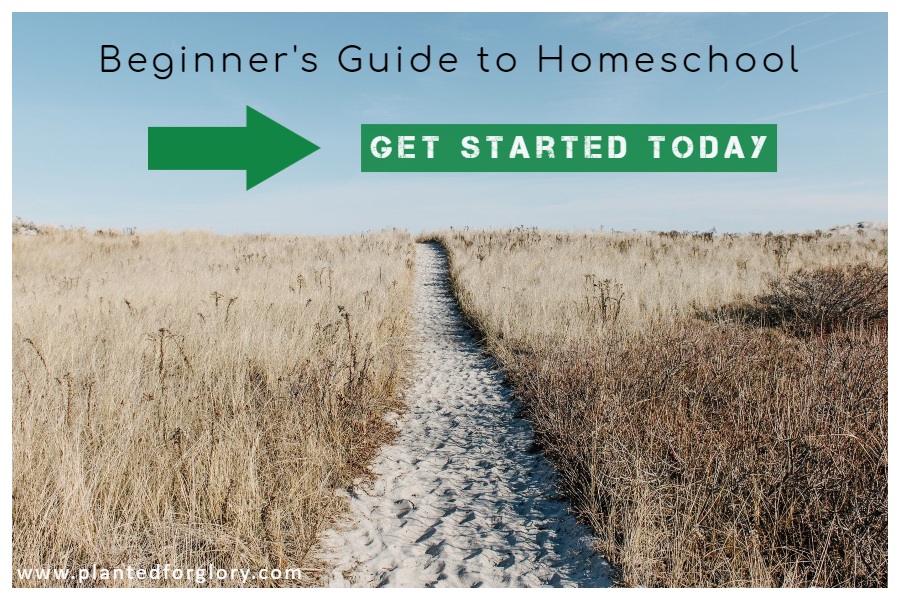




You should be so proud of yourself. This is amazing!
Thank you!